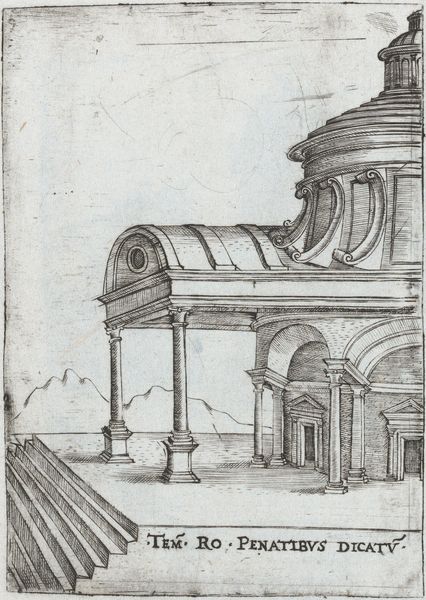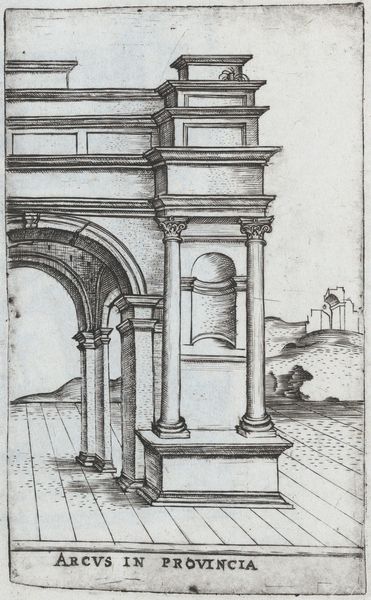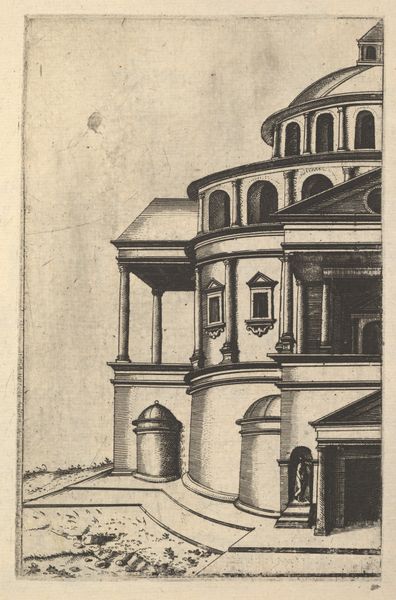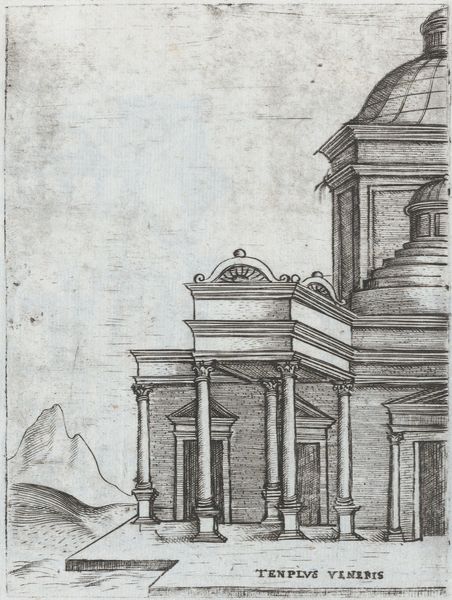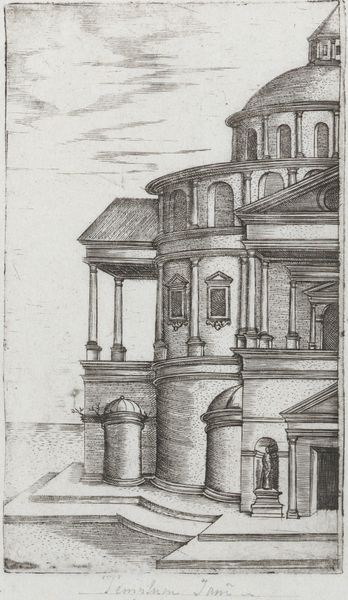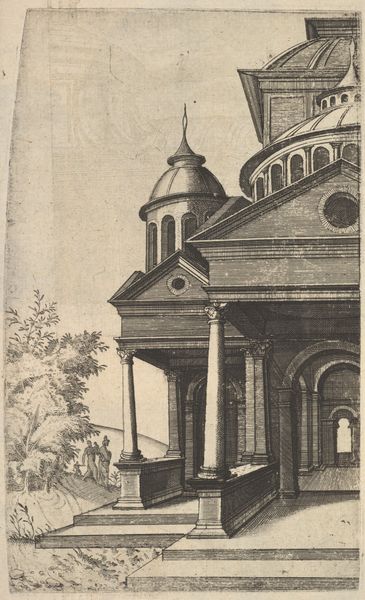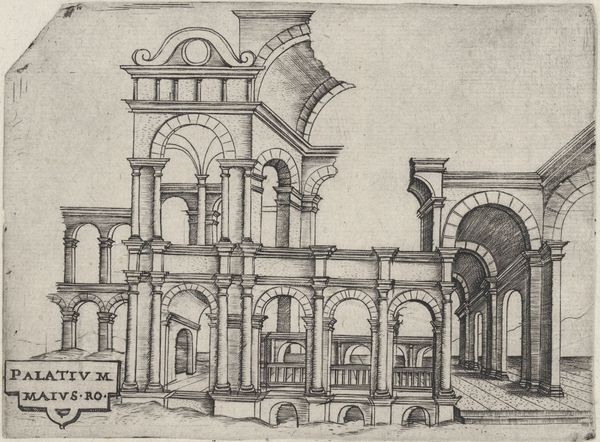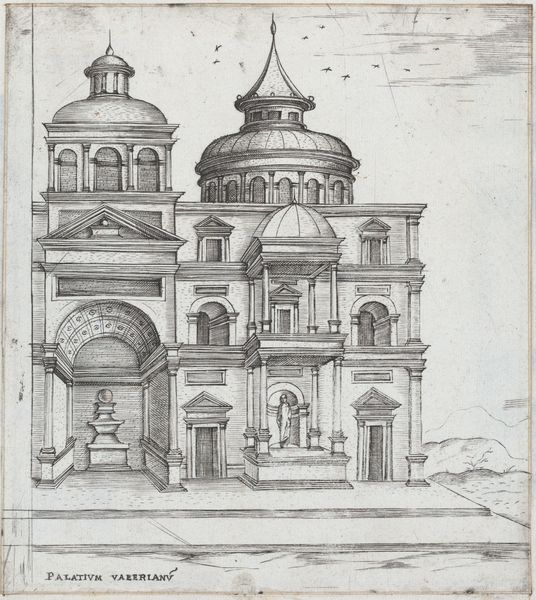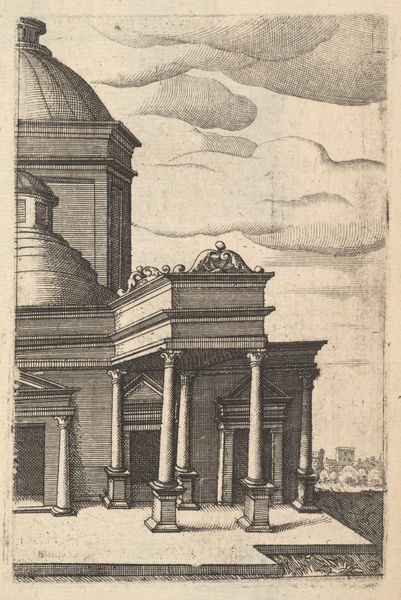
Tenplum Isaiae Prophetae, from a Series of 24 Depicting (Reconstructed) Buildings from Roman Antiquity 1530 - 1550
0:00
0:00
drawing, print, architecture
#
drawing
# print
#
11_renaissance
#
italian-renaissance
#
architecture
Dimensions: Sheet: 13 3/8 × 9 5/16 in. (34 × 23.6 cm)
Copyright: Public Domain
Curator: This intricate drawing, or perhaps a print, is titled "Tenplum Isaiae Prophetae, from a Series of 24 Depicting (Reconstructed) Buildings from Roman Antiquity". It dates from the Italian Renaissance, likely between 1530 and 1550. Editor: Stark, yet incredibly detailed. It strikes me as more of a blueprint than a portrait of an existing structure. There's an austerity, almost a chill, in the lines despite the subject being bathed in implied light. Curator: Exactly. Notice how the artist employs precise linearity to define space, almost to the point of abstraction. The shading, or lack thereof in many areas, flattens the pictorial plane. Editor: Speaking of which, Isaiah's Temple. This imagery draws heavily from classical Roman architecture to imbue the space with sacred and temporal authority. Do you notice how the imagined building feels both imposing, and curiously vacant? Curator: It is intriguing, isn’t it? It exemplifies Renaissance artistic theories on ideal architectural form. Each component adheres to a strict proportional system, contributing to the sense of harmony and rationality. Editor: But is that harmony or rigidity? I feel this pervasive order reflects humanity attempting to constrain divine, natural spaces and imposing their structure. The eye travels but finds nowhere to rest amid so much imposed clarity. The location, far-off shores, enhances this detachment, doesn’t it? Curator: Perhaps. What I find compelling is how it showcases the period's fascination with reconstructing a classical past through the lens of humanist principles. This image is a careful exercise in architectural design rather than a sentimental or romantic rendition. Editor: The artist's precision transforms an icon of religious hope into an example of detached classical ideals. It reminds us of our continuing effort to impose meaning upon the divine. Thank you for sharing! Curator: Indeed, a structure rebuilt both physically and conceptually through the ages. It has been my pleasure.
Comments
No comments
Be the first to comment and join the conversation on the ultimate creative platform.

